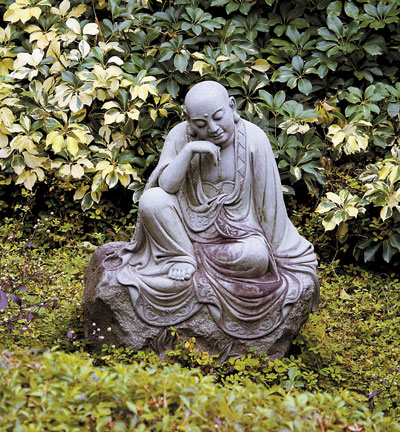
James Baquet jamesbaquet@gmail.com THREE arhats remain on our list. This week’s is one of the most fascinating. A gentle young monk is seated quietly in rapt concentration. This is Rahula (Chinese Luoholuo), only son of the historic Buddha. The young prince Siddhartha Gautama had become increasingly dissatisfied with his life in the palace, even though his father the King had shielded him from all unpleasantness. Traveling outside, however, he was exposed to three disturbing sights: an old man, a sick man, and a dead man. He then encountered a wandering ascetic, who represented a way out of the round of that suffering which is caused by birth, old age, sickness, and death. Returning home from seeing this monk, the prince sat in the garden thinking. Suddenly, a servant came running with news: The prince’s wife had just given birth to a baby boy! Hearing this, Siddhartha murmured, “... an obstacle … a fetter” — meaning something that would tie him to the householder’s life. The servant thought these words were instructions for the child’s name, and so the boy became “Rahula,” meaning “fetter” or “obstacle.” By the time Rahula came of age, the prince had become the Buddha. At his mother’s urging, he approached his father and asked for his birthright: that is, the crown. The Buddha replied that he could grant that, or he could give him something of much more value: the knowledge of the way to enlightenment. The boy accepted this higher prize, and through diligent practice, became the youngest of all the arhats. | 
